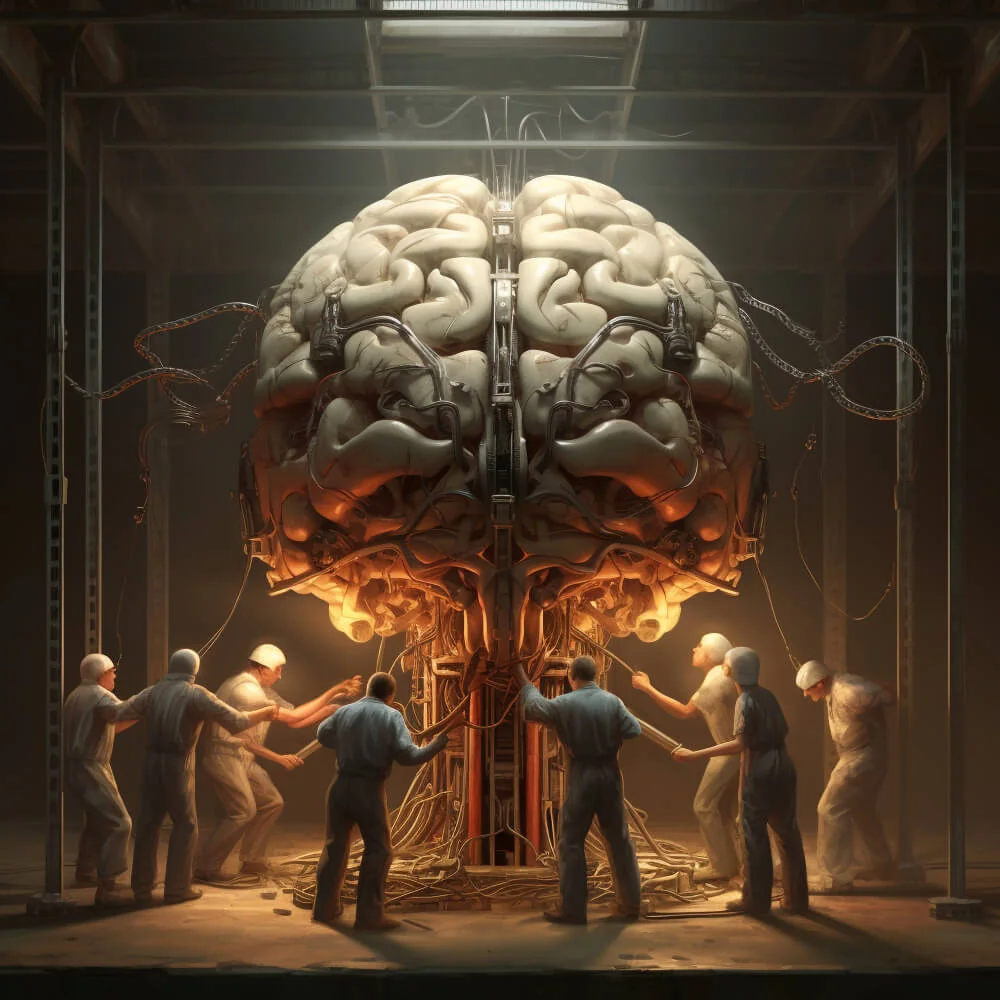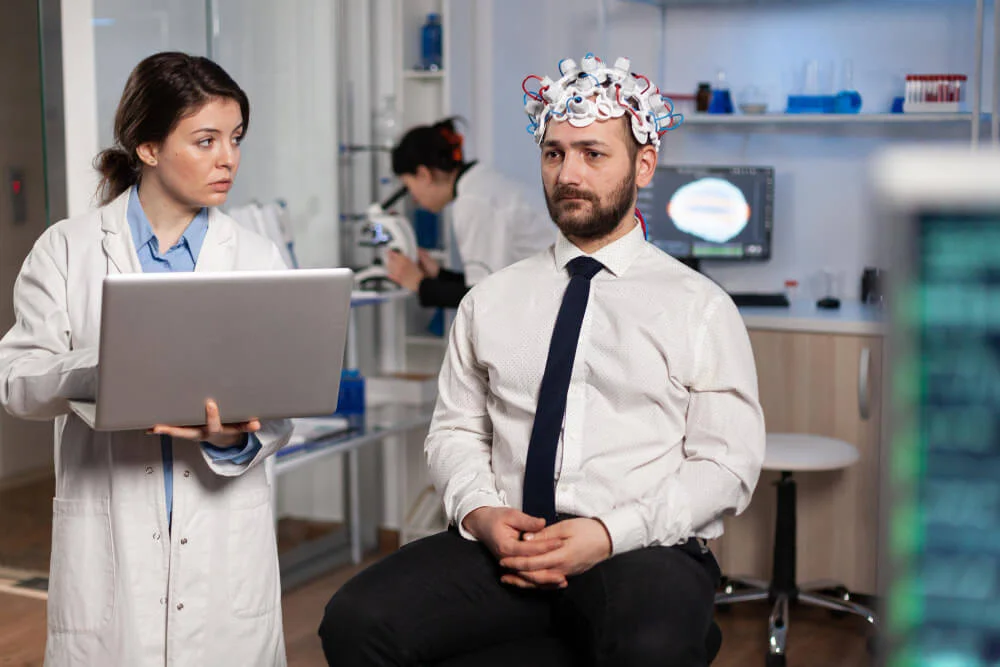Imagine living in the world, not thinking about how one’s brain works around the constant flow of information surrounding them. Most people conduct their day without much thought to it. They easily interact, respond, and adjust. But why is that? It all comes down to types of brains. The word “neurotypical” crops up in more conversations these days, but most people are not quite sure what it means. So, what does neurotypical mean, and why should it matter?
First and foremost, neurotypicality is a very important and often unquestioned paradigm to be unwoven. Society, as we know it, often functions off of a neurotypical mode. Schools, workplaces, social interactions-they all tend to cater to one type of brain function. The neurotypical mean denotes those whose neurological development and cognitive functions move inside of the societal norm. But here’s where it gets interesting: not all brains follow this blueprint. Some people do think and perceive the world in a different way, and that divergence constitutes a manner of validity, if not an insightful one.
Where brain types are concerned, the topic opens up to a whole spectrum of neurodiverse people-those who do not fit into the mold of neurotypicality. These individuals could have conditions such as autism, ADHD, or dyslexia, each reflecting another variation in the way the brain works. Neurodiversity resists the one-size-fits-all approach and instead calls for more recognition and appreciation of diversity in cognition. However, neurotypicality can only be understood after first acknowledging what is truly encompassed by the term “neurotypical”.
So, what does neurotypical mean in everyday life? The cognitive process in neurotypical mean people generally follows standardized patterns of learning, processing, and responding to the environment. They don’t wrestle much with sensory overload or understand social hints as much as neurodiverse people do. From knowing how to handle situations socially to knowing how to do daily chores, their cognitive processes remain within what most would consider “typical” or “normal.”
But it is a mistake to automatically turn those activities into superior ones. The neurotypical brain is only one variation within the wonderfully different landscape of human neurology. By saying neurotypical, one is not asserting that this person has exemplary mental health or is free from any cognitive burdens. Instead, their struggles and strengths align more with societal expectations and norms.
This is important to understand because it starts to deconstruct stereotypes. This moves society away from the “normal”-versus-“different” kind of thinking. Neurotypicality isn’t some kind of gold standard; it is but one point on a map. In considering this, we open up a wider-angled discussion of how various brain types create the richness of human experience.

More recently, there is a growing awareness regarding neurodiversity, and at the same time, an awareness regarding the inadequacy of a neurotypical-centric view of the world. neurotypical mean brains might be dominant in terms of structures within society, but they are not the only way to be. Increased awareness propels further acceptance and understanding, enabling inclusion through schools, workplaces, and communities. In order to understand the value of neurodiversity, one needs to understand upon what base it rests: the neurotypical mean.
But what does that mean to you? Understanding these concepts can literally change how one views others and even oneself. neurotypical mean or neurodiverse, it will allow your empathy and awareness to grow. It opens up a whole realm to make places accommodating for all brain types so everyone can be at their best. As we go deep into this guide, you will find out not only what it means to be neurotypical but how embracing neurodiversity can indeed make the world an enriching place.
Stay tuned.
Defining Neurotypical in the Context of Brain Types
Living in a world that fetes diversity, one cannot help but speculate how much of that diversity trickles into the way we think and process information. Beneath the banality of our everyday interactions lies a fascinating gradient of cognitive function, with one particular type peering from the center: neurotypicality. But what does neurotypical mean actually mean, and why is it so important when talking about brain types?
Neurotypicality is basically the pattern of cognition held by a society as normal. The neurotypicals have those brain functions and behaviors within the standard ranges of development. They often take the social situations, emotions, and learning environments without having to go through that extra bump that the neurodiverse individuals-for instance, with autism or ADHD-face in their different ways. It is not a question of simply drawing a line between what is “normal” and what is “different.” That classification colors our world.
In a society that is structured mainly around neurotypical brains, structures of education and employment-even social interactions-are made with respect to that norm. Schools are built for traditional types of learning. Workspaces often maintain a structure based on neurotypicality in the ways of communication and productivity. But what does that mean for people who don’t fit into this framework? Understanding and naming neurotypical mean allows us to take into deeper consideration the several delicate points of neurodiversity and accentuate the struggles emerging in the case of interaction with these systems by non-neurotypical individuals.
Now, let’s think: the term “neurotypical” may sound scientific, but it affects every part of our lives. This knowledge opens our eyes to the often-overlooked details of human behavior, everything from the ways in which we interact with others down to how we approach problems in hopes of a solution. The more we understand, the more we can let go of assumptions and strive for a setting where all types of brains feel welcome and represented, rather than just those that stick to the average neurotypical.
Understanding what neurotypical means is probably more relevant now than ever, with increased awareness around mental health and cognitive diversity. It is not just a label but a starting point into broader conversations about inclusivity and adaptability in all aspects of life. The more we know about neurotypicality, the better prepared we will be to foster an environment where each person can thrive irrespective of their brain type.
Understanding neurotypicality is not about the recognition of the majority; it is about inclusion.
Why Understanding Neurotypical Matters in Today’s World
In all the talk about diversity and inclusion, there is one pivotal factor that gets skimmed over: the brains we have. Think about this: at every turn, we tailor our societies, workplaces, and educational systems to a certain expectation in the manner of thinking, learning, and generally carrying oneself. But what happens if those expectations apply only to one kind of functioning of the brain? This is where the concept of being neurotypical mean comes in. But what does neurotypical mean, and why does it matter more than ever?
The neurotypical mean: Those people for whom the neurological development did not usually differentiate from the societal norm. Their cognitive pattern follows how most systems are built around: typical emotional responses, learning abilities, and social behaviors. These people blend seamlessly into a world designed for them, but what about those whose brains simply work differently? Gaining an understanding of neurotypicality is crucial because it plays a role in shaping one’s approach towards neurodiversity involving individuals with conditions such as autism, ADHD, and dyslexia.
Why should you care? The world is going fast, and our workplaces are getting more diverse, schools more inclusive, and mental health awareness higher. Yet most of our systems are still built on a neurotypical platform. The way we teach children, the structure of corporate environments-the neurotypical mean delineates the baseline. If we fail to understand this much, then we risk failing to account for the particular challenges faced by neurodivergent people and making a world which marginalizes people who differ from the so-called “norm.”.
Neurotypicality is not a name or a classification of a brain type but a questioning of the status quo. It calls upon us to reconsider the infrastructure we have established and to question whether it treats all individuals equitably. The more we learn about what Neurotypical Mean, the more we are driven to advocate for change. We can fight for flexible workplaces, adaptive learning environments, and a society accepting of all brains, whatever their functioning, for their worth and support.
Why now? Neurotypicality becomes the solution in coming to a future that preaches inclusivity, through a deeper understanding. This knowledge is the first step in bridging the gap between neurotypicals and neurodivergents, so that no one gets left behind. It’s time for it to come alive through empathy and creating a world where all brain types are able to succeed.
The Origins of the Term Neurotypical
But do you ever wonder how we determine what is “normal” about the human brain? Living in a time of heightened awareness for cognitive diversity, the term “Neurotypical Mean” has become the buzzword as we struggle to grasp how we define the different functions of the brain. Where did this word really originate, and why does its origin matter in reference to mental health and cognitive development?
The term Neurotypical Mean really comes from the concept of neurodiversity, which says that there is not one ‘right’ way for the brain to work. The word was originally coined in the 1990s by autistic communities, naming individuals whose brain function and behavior align with what is considered the societal norm. But the history of the term is so much more than this clinical-type definition; it constitutes a shift in how we conceptualize human behavior. What, in this case, does neurotypical mean? It’s not just a label; it’s a contrast to neurodivergent individuals-those whose cognitive processes differ significantly from the standard.
The reason this term is important is that it has the ability to redefine “normalcy.” Prior to the neurodiversity movement, those who did not fit into the parameters of neurotypicality were often marginalized or misunderstood. The creation of the term “Neurotypical Mean” allowed for a clear distinction, not to separate, but to emphasize that within the spectrum of human experience, different brain types exist. Knowing what Neurotypical Mean is key to promoting discourse related to inclusivity, mental health, and education.
At its core, the term “neurotypical” comes out of challenging existing biases and pushing for an inclusive society. Prior to the term taking on a popular usage, there was no decent shorthand for referring to the majority of the population that fit within the Neurotypical Mean framework. Now, the term is a strong tool in helping our views on what it is to be human expand.
Today, the rising awareness of cognitive diversity makes the word “neurotypical mean” remind one that no one brain type is superior. It challenges us to question the structures and systems set up and whether they serve everyone equally. Knowledge of the etymology helps us grasp the full weight of such a term and invites us to revise the way we think of normality today.
A Brief History of the Term’s Development
Language has the power to shape our perceptions of the world. When it comes to cognitive diversity, there’s a single term that really revolutionized how we relate to human brains: Neurotypical Mean. But where did that term originally come from? And why is its history important to understand in modern-day conversations about mental health and inclusivity?
The origin of the term “neurotypical mean” dates back to the late 20th century and emerged with the neurodiversity movement. It wasn’t coined by medical professionals but by the autistic community in an attempt to coin a vocabulary that actually described them. Up until then, society had been based upon the understanding that there is one kind of brain function-a “norm”-and any that aren’t like it are inherently deficient or disordered. But what does Neurotypical Mean? It is that category of people whose neurological development and cognitive functions have been molded through the typical order of life, hence fit into environments designed for them with ease.
As the term started settling, it did more than just define a category of people-it reshaped the conversation around cognitive diversity. It forced society to realize that “typical” and “atypical” brain functions are not binaries of right and wrong. Instead, they are different ways of experiencing the world. For many years, the Neurotypical Mean perspective was the default one; all other cognitive differences were looked at through the lens of pathology. The term “neurotypical” managed to create a dent in such a narrative and thus actually changed the understanding of cognitive variety.
It started to filter into academic, medical, and public discourse through the 1990s into the present century. This naming not only supplied a name but also validated the experience of neurodivergent people by pointing out the weak spots in one-size-fits-all approaches to education, work, and social interactions. Naming what neurotypical mean served to hint at just how our systems-designed for neurotypical minds-tend to exclude or challenge, even when wholly unintentional, those with other ways of thinking.
The moment one starts to delve a little into the history of this term’s development, it gets pretty clear that language can change. “Neurotypical” is a word, but it is also an entrance to broader discussions about how we define normalcy, how we treat cognitive differences, and how we can make a more inclusive society. Knowing its history gives us deeper context about how far we have come-and how much further we still need to go.
Who First Coined Neurotypical and Why It’s Important
The term ‘neurotypical mean’ became imperative in the discourse over brain function and cognitive diversity, although seldom does one find out where this major term comes from, nor its reasoning as to why it’s such an important word today. To understand the powerfulness of this word, we need to track down where it comes from and understand how it reshaped our thinking with regard to mental health, behavior, and societal expectations.
The term “neurotypical” was coined by members of the autistic community in the 1990s. It was a response to the prevalent medicalized framing that positioned autism, in concert with other cognitive differences, exclusively as disorders or deficits. Instead, what the community wants is to describe people whose neurological development conforms to what society is used to calling the “norm.” But what does neurotypical mean ? It has come to refer to people whose cognitive abilities follow typical developmental paths-those whose brains match up with the standard mold that society unconsciously builds up around the human brain.
This term is much more than a label. The naming was more than a pragmatic move; it was also an important conceptual shift. In defining what neurotypical mean is, we implicitly started to acknowledge that there isn’t “one right way” for a brain to be. This shift challenged the binary notion of “normal” versus “abnormal” and created space for a more inclusive understanding of human cognition. For the first time, neurodiversity was not something that had to be fixed; rather, it was a variation in the population.
So, why is this important today? As cognitive diversity awareness increases, the term “neurotypical” reminds us how often our systems are designed in education, socially, and professionally to accommodate one kind of brain. Understanding what neurotypical mean means gives us an opportunity to fix these systemic biases in favor of inclusive practice for all, regardless of how their brains are wired.
The word “neurotypical” itself was the coining of a new reframing of cognitive differences. It crystallized discussions on mental health, enabling society to move from stigmatizing labels into a nuanced understanding of human behavior. By looking into the etymology of this word, we are not only paying homage to those who coined it but also continuing in opening the doors for wider, more compassionate discussions about the diverse ways in which we experience the world.
Neurotypical vs. Neurodivergent
Living in a world where no two brains are alike, we often compartmentalize cognitive abilities into two big categories: neurotypical mean and neurodivergent. But what does that even mean, really? Why does it matter? In a time where society is more cognizant than it’s ever been regarding mental health and cognitive differences, understanding how these two classifications differ from one another has never been more important.
What is considered neurotypical mean, as opposed to neurodivergent? The term neurotypical refers to individuals whose neurological development matches what society has come to identify as the standard or typical. Typical individuals tend to view the world through a socially accepted filter of cognitive patterns, emotional responses, and learning styles. Most educational institutions, workplaces, and social norms have been built with these people in mind. Whereas neurotypical people might process information, emotions, and interactions along a fairly predictable set of paths, neurodivergent individuals-those with autism, ADHD, dyslexia, and other conditions-they do things differently. But that’s not a deficit, that’s just a variation.
Why does this distinction matter? In working our way through the challenges of modern life, it is critical to recognize that the current neurotypical mean framework has framed and often excluded neurodivergent individuals in systems design for many years. The more one understands what neurotypical is, the greater the appreciation for those who are not. Perhaps sometimes neurodiverse people may struggle in a world built for neurotypical people, but they have much to offer in terms of unique perspectives, imagination, and problem-solving that benefit society as a whole.
Consider how much talent and ingenuity might be freed if, instead of trying to make everybody fit a neurotypical mold, we welcomed the full range of cognitive diversity. In that sense, at an increasingly critical point in history, such an understanding becomes a call to action: revisiting the systems that nurture the norm of neurotypicality and moving toward accommodation and celebration of all kinds of minds.
The neurotypical mean versus neurodivergent conversation is not about the definitions themselves but is about building toward an even more inclusive future. Once one acknowledges value in both, it allows us to transcend old notions of normalcy and begin celebrating variations in thought and experience native throughout each corner of society.
What Is Neurodivergent and How It Differs from Neurotypical
The human brain is an intricate and diverse machine, and the way each person processes the world is unique. But for centuries, society has sought to lump cognitive functions into two overarching categories: neurotypical mean and neurodivergent. Understanding the differences between these terms is key to making an inclusive society. But what does neurotypical actually mean, and how does that differ from being neurodivergent?

Neurotypical describes people whose neurological development and cognitive patterns conform to that which is generally accepted as “normal” or typical. These individuals can navigate social systems, educational systems, and work systems without much inconvenience simply because these systems have been designed based on the assumption that minds work like theirs. Neurodivergent describes those whose brains are wired differently; it includes a wide range of conditions and cognitive styles, such as autism, ADHD, dyslexia, and much more. The term neurodivergent came from the neurodiversity movement, which itself fights for the recognition and respect of such differences as a natural variation in the human brain, rather than disorders that need to be “fixed.”
The importance of recognizing the distinction between the two goes beyond the issue of terms. That means it’s about understanding that the world, in most ways, is designed for neurotypical people who require the rest of the world to struggle when the environment isn’t meant for them. What does neurotypical mean, in practice? It means most structures in society-from classrooms to offices-are built upon one notion of a normal way of thinking, learning, and interacting. But if we begin to grasp that there is no single type of brain, then we can begin to appreciate strengths and different perspectives that neurodiverse people bring.
Why does this difference matter so much today? As more and more people become aware of mental health and cognitive diversity, neurodivergent becomes a very key word in shaping our idea of understanding and embracing differences. It is by contrasting what neurotypical means from the experiences of neurodivergent individuals that we move toward a more inclusive society-that all types of cognitive kind are given the tools and environments they need to flourish.
We need to dismantle the systems that cater exclusively to the neurotypical mindset if the neurodivergent perspective is to offer invaluable insights in a world that’s innovative and values creativity. Broadening our idea of how brains work will let us create a future truly valuing cognitive diversity, where neurotypicals and neurodivergents alike can reach their full potential.
Common Examples of Neurodivergent Conditions
Neurodivergent has emerged in an increasingly sensitive world, tuned into every nuance of human cognition, as a very important identifier for a range of brain differences. While various people may be able to think about a neurodivergent person, it is important that the need is felt to go deeper in explaining some conditions behind this one-word identifier. What do these conditions involve, and how does it differ from what many of us refer to as “neurotypical”?
neurotypical mean refers to someone whose cognitive functioning conforms to the norms and expectations of society and may enable them to negotiate common obstacles with ease. In neurodivergent people, there is a difference in how their brains function that might affect the ways they view things, learn new concepts, and interact with others. Neurodiversity manifesto-candidates may include but are not limited to conditions such as ASD, ADHD, dyslexia, and obsessive-compulsive disorder. Each one of these conditions is singular in various characteristics and challenges and reshapes an individual’s interaction with the world in its unique way.
Arguably, ASD is the most-recognized neurodivergent condition: symptoms of it are incredibly broad, ranging in their impact on communication, behavior, and sensory processing. Those on the spectrum may become unusually sensitive to stimuli or engage in repetitive behaviors. ADHD is another common neurodivergent condition that usually manifests itself as problems with focus, impulse control, and hyperactivity, posing challenges to those individuals in academic and social settings. Dyslexia affects reading and language processing and can make traditional education techniques extremely hard. While OCD, on the other hand, is a condition that causes an individual to execute compulsive behaviors or intrusive thoughts that interfere with daily life.
Understanding such conditions is very important, not only to generate empathy but also to make provisions that include as many different cognitive needs as possible. It’s time to move beyond the simplistic notion of what neurotypical mean and to realize strengths that neurodivergent individuals bring to our communities. By embracing this diversity, society opens up a potential usually left un tapped and creates avenues for innovative thinking and richer interactions. In learning more about common examples of neurodivergent conditions, the more we are capable of supporting the unique journey each person lives.
Conclusion
Taken together, these neurodiverse conditions underscore the extraordinary variability in human cognition. From ASD to ADHD, dyslexia, and OCD, each of these various conditions carries specific liabilities and assets that further our understanding of what it is to be human. Such recognition is not a mere mental exercise but an important step in cultivating tolerance and empathy in our world.
As we delve deeper into what the term neurotypical mean really means in relation to neurodivergence, it would seem that strict definitions of “normal” only serve to marginalize those who think and process the world differently. Embracing neurodiversity enables us to reconsider educational and workplace environments, crafting spaces specifically designed to accept and value a wide range of cognitive styles. Moreover, this approach fortifies the broader tapestry of creativity and innovation within our communities, not solely benefiting the individual who is neurodivergent.
We must advocate for policies and practices that value and respect the neurodiverse experience. Providing support and accommodation in various ways enables neurodiverse individuals to successfully navigate challenges. By doing so, we build a society responsive to a variety of perspectives and create an awareness that diversity of thought, experience, and cognition ultimately has the effect of strengthening us all.
As awareness continues to increase, let us commit to learning more about the conditions and what they entail. We can work in unison in this journey of understanding and acceptance to break down stereotypes, reduce stigma, and build a culture of inclusion. It is a journey toward a more empathetic world through understanding, compassion, and opening of hearts to the diversity that runs deep within each one of us.







